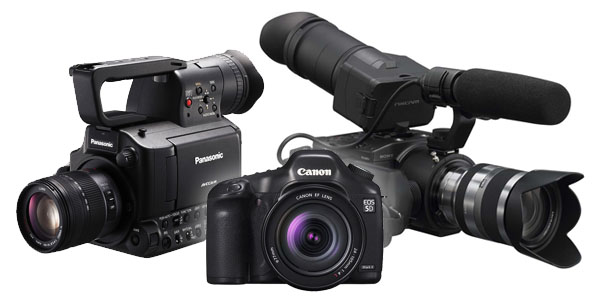You’ve heard people say "I don’t like to read" or "I don’t listen to the radio" but why does no one ever say "I hate watching video?" Well, believe it or not, we are actually designed to respond to video better than any other form of media. It’s in our DNA.
I’ve learned a lot working for aideMMedia over the past 8 months or so. I can set up a jib. I can shoot video. I can do some lighting. And I can fit an impossible amount of video equipment into the back of a mid-sized car.
 But what will stick with me the most is learning the different ways people use video.
But what will stick with me the most is learning the different ways people use video.
Some use it to promote. Others, to educate… or even inspire.
Video is extremely versatile and can be used for almost anything. And we use it because we love it.
Think about it, you’ve heard people say "I don’t like to read," or "I hate the radio," but no one ever says "I hate video."
Why? Well, for starters it’s in our DNA.
It is commonly thought that about 75 percent of the population is visual learners. That leaves just 25 percent that think in mostly words. We are designed to think in pictures and, therefore, understand visual observations much better than observations made from other senses.
Proof that humans enjoy video more than other forms of media can be seen in the statistics. Using Google Analytics, we can compare the bounce rate (number which shows the rate of people who leave a site without taking any action) from text-only sites and sites with video displayed. For text-based sites this rate is about 87 percent, whereas video-based sites have a bounce rate of only 59 percent.
And not only does video encourage people to take action on the site, it also makes them stay on the website longer. On average, people spend almost six minutes on a site with video, compared to just 42 seconds on a site that is text-only.
Here’s a cool TED Talk video about how Youtube is actually driving innovation:
I’m a statistic junkie, but our love for video is seen in first-hand experiences. We send out viral videos to friends a lot more often than viral texts. And we’ll click on the video before reading the article. Even Google puts videos on the first page of your search now!
And as my final blog comes to a close, I’m realizing that I did it all wrong. I should have been vlogging!
Still learning, my last day on the job…
Thank you aideMMedia for an awesome experience and an unmeasurable amount of learning.



 But these films are not the only Lancaster-centered premieres. The
But these films are not the only Lancaster-centered premieres. The 



 picture on the screen consumes us. We are there, in the cars, alongside the actors.
picture on the screen consumes us. We are there, in the cars, alongside the actors.
 Since the creation of media, stills and video have always been intertwined. And Cannon continues to bring the two closer together.
Since the creation of media, stills and video have always been intertwined. And Cannon continues to bring the two closer together. were mostly positive, but it was still not perfect. There wasn’t a variety of lens choices, and lenses from other cameras lost half of the field of view.
were mostly positive, but it was still not perfect. There wasn’t a variety of lens choices, and lenses from other cameras lost half of the field of view.
 technology during gameplay. And home 3D TVs are becoming common.
technology during gameplay. And home 3D TVs are becoming common.
 digitally. Transitions, titles and sequence editing were now common in amateur videos.
digitally. Transitions, titles and sequence editing were now common in amateur videos.

 Today, the cat could just Google it. Or maybe Youtube it. But whatever it does, it definitely would defuse it’s curiosity with a web search before driving itself to death over the issue.
Today, the cat could just Google it. Or maybe Youtube it. But whatever it does, it definitely would defuse it’s curiosity with a web search before driving itself to death over the issue.